
views
Cleaning Your Piercing
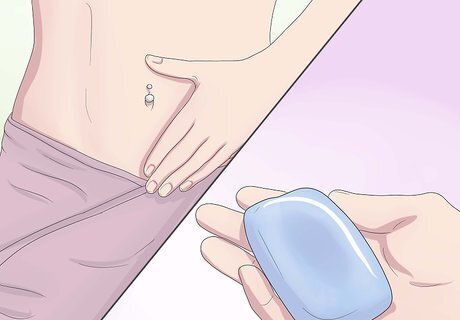
Wash the piercing with antibacterial soap once or twice a day. A new navel piercing needs to be cleaned thoroughly at least once, and preferably twice a day. The easiest way to clean your new piercing is in the shower. Cup your hand under the piercing and allow clean, warm water to run over it for a minute or two. Try to avoid getting soap or other cleaners into or around your piercing as this can lead to infection and drying of the skin around the piercing. Take a gentle basic liquid soap with no dyes and squirt a drop or two into the palm of your hand. Lather it up, then apply the lather to the piercing and the suing, preventing infection and promoting healing. They should be done once or twice a day while the piercing heals.Clean Navel Piercings Step 2 Version 2.jpg To make a salt soak, dissolve a teaspoon of sea salt in half a cup of boiled water. Allow the water to cool slightly, then transfer it to a clean glass or medicine cup. Do not use iodized salt, kosher salt or Epsom salts, as these can irritate the piercing. However, you can use a store-bought saline solution instead of the sea salt. Rest the edge of the glass beneath your navel piercing, then quickly flip it over, pressing firmly to prevent any water from leaking out. Lie down on a sofa or bed to allow the piercing to soak in the salt solution for 10 to 15 minutes. Place a towel beneath you if you're afraid of spills. Rinse the piercing thoroughly with clean water, then dry completely with paper towel or tissue. Don't use a cloth towel, as these can harbor bacteria.
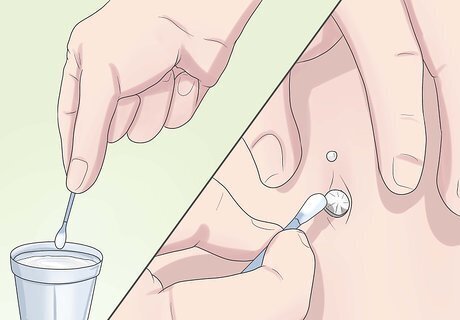
Clean any crusting with a cotton swab. As your piercing heals, it will secrete a white to off-white fluid. This is part of the healing process and is perfectly healthy and normal. However, this fluid may build-up and cause crusting around the piercing. If you do see crust around your belly ring, do not panic as this is perfectly normal. To remove the crusting, dip a cotton swab in some warm water and use it to gently rub away any crusting from the piercing. Never pick the crusting off with your fingers as this can lead to infection. If the crust around the piercing is left to build up, it can harden around the ring, tearing at the wound when the ring moves. This can be painful and delays the healing process.
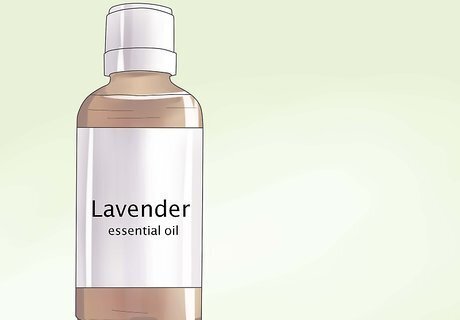
Apply lavender oil. Lavender oil is a great natural product which promotes healing and reduces swelling and tenderness around the piercing. Thoroughly wash your hands with antibacterial soap, then apply a couple of drops of the lavender oil to a clean cotton bud and rub gently around the piercing. Gently rotate the ring or move the barbell up and down to make sure the lavender oil reaches inside the piercing. Use a tissue to wipe any excess oil from the skin. Lavender oil can be purchased at the supermarket or chemist's. Just make sure it is clearly marked as being "medicinal grade" -- this guarantees the purity of the oil and reduces the chance of irritation.
Knowing What to Avoid

Do not over clean the piercing. Although it may seem like a good idea to clean the piercing more than twice a day, over-cleaning can actually strip natural oils from the skin, causing the piercing to become dried out and irritated. However, it is important that you always clean your piercing after exercise or periods of intense sweating (even if you've already cleaned it that day), as sweat can irritate the piercing.
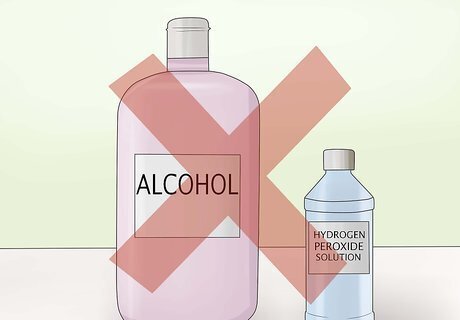
Avoid using rubbing alcohol or hydrogen peroxide. It is a bad idea to use either rubbing alcohol or hydrogen peroxide to clean your piercing, as these substances dry out the skin which leads to irritation. In addition, these substances prevent the growth of healthy new cells within the piercing, which slows down the healing process.
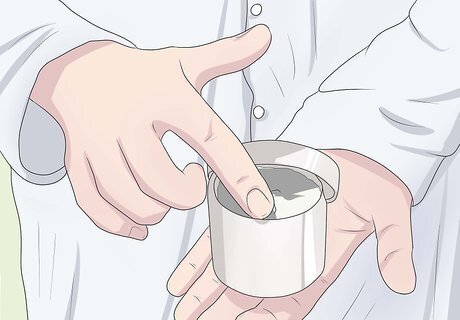
Don't use bacitracin or other antibacterial ointments. These types of ointments are not meant for puncture wounds (like piercings) as they keep the wound too moist, which cuts off oxygen supply to the tissue and slows down the healing process.
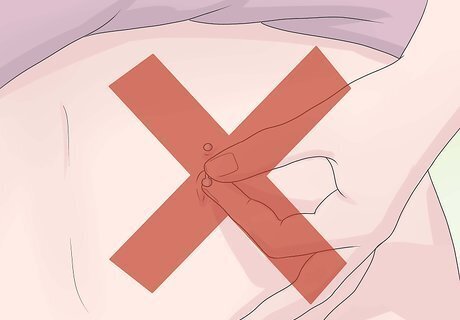
Avoid moving the ring around inside the piercing. Avoid turning, twisting or rotating the ring or barbell for the first 3 to 4 weeks, as this aggravates the wound and slows down the healing process. Twisting the ring also means that you are touching the piercing more than necessary, which increases the risk of bacteria from your hands being transferred to the navel and causing infection.

Avoid wearing tight clothing. For the first few weeks after a navel piercing you should avoid tight clothing such as high-waited jeans, skirts and pantyhose. The jewelry may get caught in the clothing and tug at the wound, which is painful and slows down healing time. You may also want to cover your navel piercing with a large bandage when playing contact sports and in bed, when there is an increased risk of tugging or pulling on the wound.
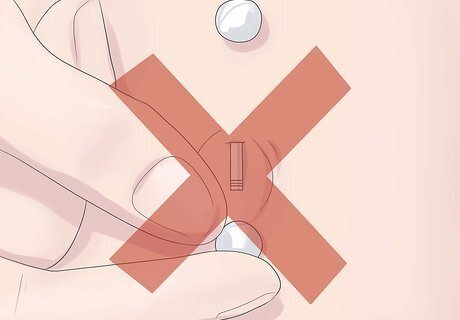
Don't remove the ring during healing. You should never remove the navel ring or barbell while the piercing is still healing. Navel piercings can close up very rapidly so if you remove the jewelry (even for short periods of time) you may be unable to get it back in again.
Dealing with Infections

Identify signs of infection. Sometimes, despite your best efforts, the piercing will still become infected. When an infection develops, it's important that you deal with it immediately, to prevent it from becoming worse. The main symptoms of an infected piercing are as follows: Excessive redness and swelling around the piercing. Pain or tenderness whenever the area is touched or the jewelry moves. Green or blood-streaked pus seeping from the piercing.
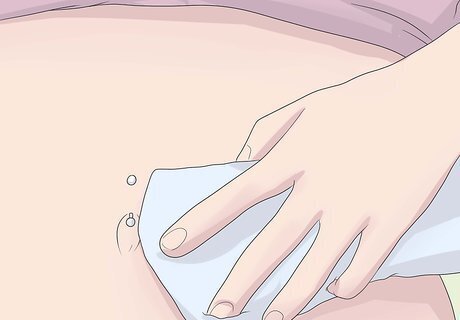
Apply a warm compress. A warm compress can help to draw infection from the piercing. Soak a clean washcloth in warm water, wring out the excess, then press against the piercing for three minutes. Repeat 3 to 4 times a day.
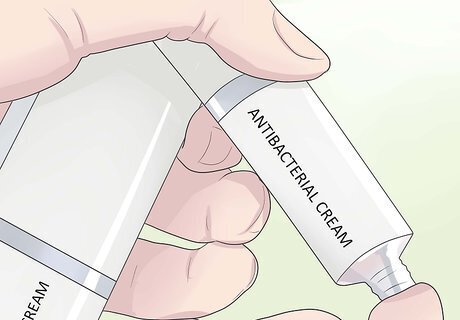
Clean with antiseptic cleaner and apply an antibacterial cream. After applying the compress, clean the piercing with an antiseptic cleanser, remembering to thoroughly rinse with running water. Dry completely with paper towel, then apply a thin layer of topical antibacterial cream.
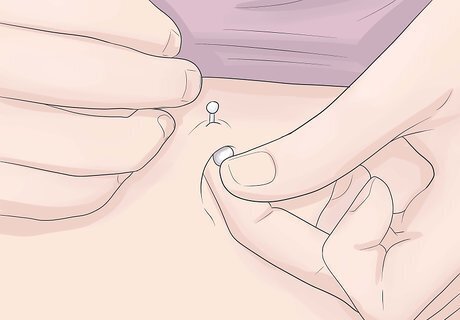
Do not remove the navel ring. Do not under any circumstances remove the jewelry from the piercing. If you do, the piercing may close up, thus sealing the infection inside the navel. This makes it very difficult to treat. It's much safer to leave the jewelry in the piercing until the infection has cleared.

See a doctor if symptoms persist. If the infection has not improved after 24 hours, or you begin to develop fever or chills, it is important that you see a doctor immediately. They can prescribe antibiotics to clear up the infection.
















Comments
0 comment